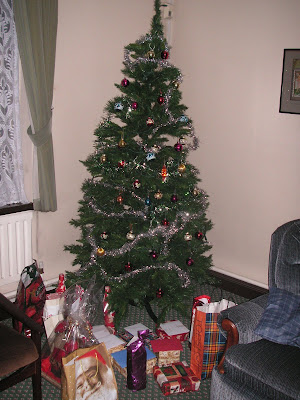Happy Christmas


Labels: Christmas
The Blog of an English Catholic Priest


Labels: Christmas



Labels: Parish

Labels: Christmas
A survey of 37,000 churches, to be published in the new year, shows the number of people going to Sunday Mass in England last year averaged 861,000, compared with 852,000 Anglicans worshipping.It is part of the changing face of churchgoing across Britain in the 21st century which has also seen a boom in the growth of Pentecostal churches, which have surpassed the Methodist Church as the country's third largest Christian denomination. Worshipping habits have changed dramatically with a significant rise in attendance at mid-week services and at special occasions - the Church of England expects three million people to go to a parish church over Christmas Eve and Christmas Day. In an attempt to combat the declining interest in traditional religion, the Anglican Church has launched radical new forms of evangelism that include nightclub chaplains, a floating church on a barge and internet congregations.Bishop Hollis told the Sunday Telegraph: 'we don't want to be seen to be scoring points over the Anglican Church as we are in no way jealous of its position as the national church, but of course these figures are encouraging. It shows that the Church is no longer seen as on the fringes of society, but in fact is now at the heart of British life.'
Labels: News
Labels: News
Labels: Christmas

Labels: Liturgy, Roma Eterna




Labels: Roma Eterna

Requiescat in pace.


Labels: Diary, Roma Eterna

 The churchyard unusually contains the graves of some distinguished Catholics. Here is Mgr Knox's:
The churchyard unusually contains the graves of some distinguished Catholics. Here is Mgr Knox's:





Labels: History



Some of you may have seen this already, but I've only just discovered it. There are some fascinating shots of a Dominican Rite Mass and other beautiful scenes of conventual life. It was filmed at St Stephen's Priory, Dover, MA, the Dominican House of Studies, Washington, D.C., and St. Dominic's Church, Washington, D.C.
Labels: Orders, Priesthood


Labels: Saints

Explore the history of this fascinating Garden City church and find out all about one of its founding fathers, the internationally acclaimed scholar, writer and preacher, Father Adrian Fortescue. Featuring rare and significant objects that reveal the story behind the man and his achievements.






Labels: Diary
Labels: Diary
Labels: Blogging
Labels: Books
Labels: Parish
Labels: Papal


Labels: Devotions
Labels: Priesthood
Labels: Parish
 Apologies for the lack of posts over the last week - things have been hectic in the parish and I've also been away for my last bit of annual leave (which has been rather split up this year). Thanks to the budget airline industry, I spent a couple of days with some parishioners from my last parish, who have moved to the Tuscan village of Roggio (see picture above), north of Lucca. This is situated in the beautiful Garfagnana area and the surrounding woods are famous for mushrooms and chestnuts. There is a house in the village where, according to local tradition, the future Sixtus V (r.1585-90) was born, though it seems more likely that it was connected in some way to his family (Peretti). Most sources say that he was born in Ancona.
Apologies for the lack of posts over the last week - things have been hectic in the parish and I've also been away for my last bit of annual leave (which has been rather split up this year). Thanks to the budget airline industry, I spent a couple of days with some parishioners from my last parish, who have moved to the Tuscan village of Roggio (see picture above), north of Lucca. This is situated in the beautiful Garfagnana area and the surrounding woods are famous for mushrooms and chestnuts. There is a house in the village where, according to local tradition, the future Sixtus V (r.1585-90) was born, though it seems more likely that it was connected in some way to his family (Peretti). Most sources say that he was born in Ancona.



Labels: Diary

Labels: Saints



Labels: Liturgy










